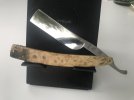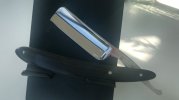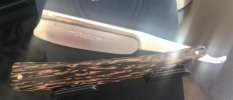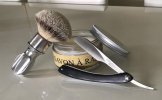Following the recent storms in the uk, there are a lot of trees down in my local woods. Mostly ash, oak and beech, even an old apple tree. Set me thinking as to which native / naturalised uk tree species would be suitable for scale making (given land owners permission to remove some branches). The obvious answer is all, but some may be too soft? Need stabilising?
What would you consider? Any to avoid? For example I think poplar would be way too soft? Do I recall oak is not good as it reacts with steel?
Any pics of finished examples?
Mike
What would you consider? Any to avoid? For example I think poplar would be way too soft? Do I recall oak is not good as it reacts with steel?
Any pics of finished examples?
Mike




